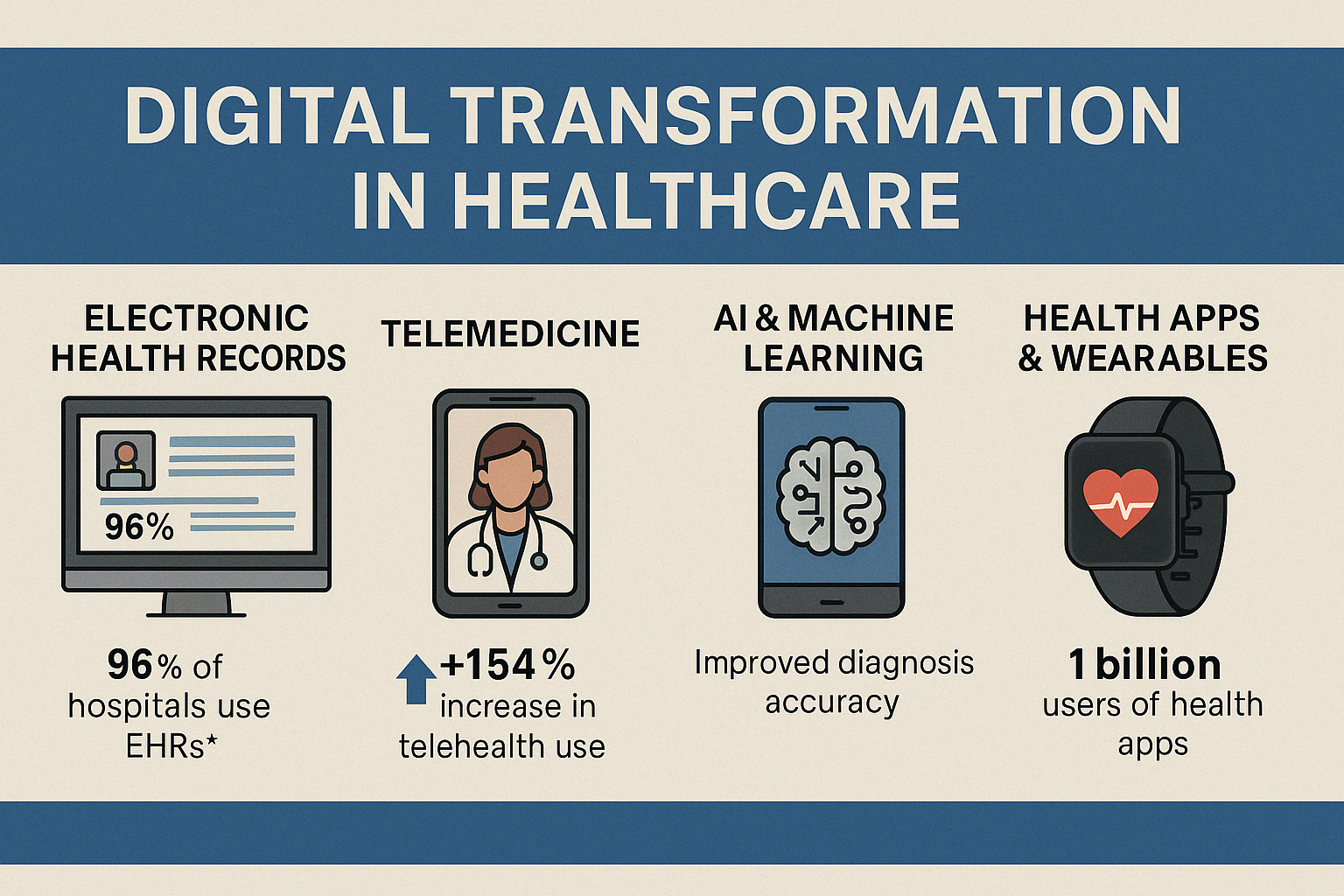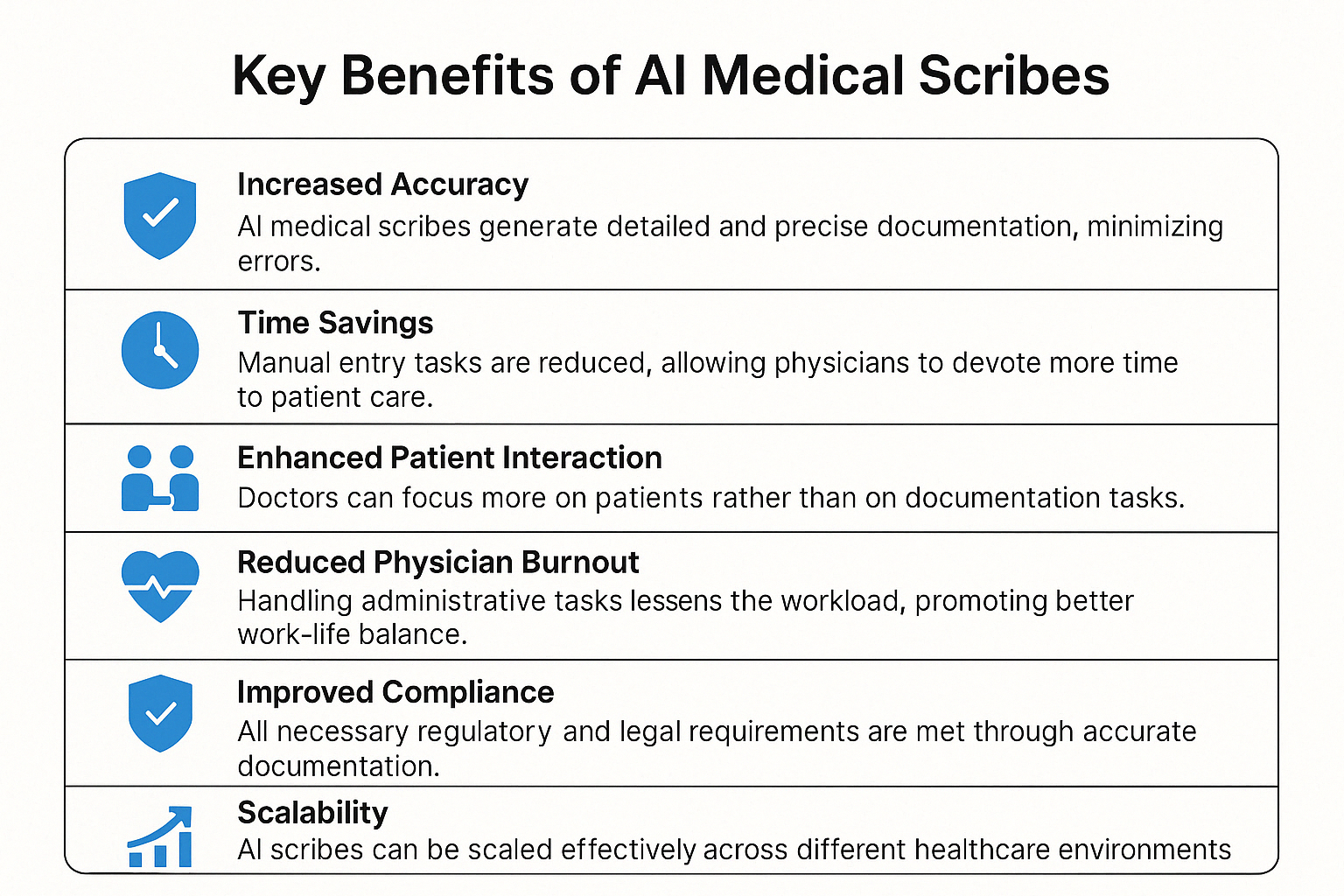The Impact of AI-powered Medical Scribes

Documenting clinical records is a tedious task, and more often than not, has to be handled by doctors or midlevels (NPs/PAs).
This is a well documented problem. A 2024 report shows about 49% of physicians said they were burned out. The same study reveals the number one cause for this burnout is too many bureaucratic tasks like charting, paperwork, etc.
Thus, it follows from this data that this pertinent problem could easily be handled if there were some alternative way to complete these documentation tasks. Luckily, there exists a way that has recently seen development. And, that is using AI-powered scribes.
Apart from lowering the burnout levels of doctors, it helps improve physician-patient interactions, aids in efficient billing and leads to a more streamlined workflow.
Historical Context of Medical Scribes
Medical records have been a part of medical practice for centuries. In the past they served to keep a written document of the happenings and progress in medicine. In modern times, a well-prepared document serves educational, legal, and insurance purposes.
These modern record keeping practices did not begin till the 19th century. Specifically, they started in the 19th century in Paris and Berlin.
The early 20th century marked the beginning of medical scribes. This period started documenting patient interactions, thus helping to create a detailed and structured record of patient visits.
Digital Transformation in Healthcare

The late 20th century saw records shift from paper based records to Electronic Health Records (EHRs) - a move that was much needed. This change was driven by technological innovation and has benefited greatly from the increases in accessible patient information. The use of EHRs has helped to minimize errors, reduce redundant tests, and streamline patient management. That being said, EHRs and increasingly demanding reimbursement requirements levied by insurance companies has introduced significant administrative burdens, contributing to physician burnout.
Enter AI-powered medical scribes. These have changed the documentation game. Intelligent application of advanced speech recognition paired with state of the art LLMs have resulted in an optimized patient record management.
How AI Medical Scribes Work
Real-time patient provider conversations undergo conversion to structured clinical notes through the use of AI-powered medical scribes. AI scribes rely on several key technological elements, which we will delve into here:
Speech Recognition With Natural Language Processing: The system detects medical terms while determining which healthcare professional speaks during conversations and maintains an understanding of medical dialogues. By using NLP systems, clinicians can achieve correct transcription of complex discussions in medicine which prevents crucial information from being lost or misunderstood.
Machine Learning: This technology helps improve system accuracy over time. Past interaction analysis improves the capability of the program to identify diverse accents, speech patterns and medical terminology. The system develops improved operational efficiency which reduces manual requirements along with better documentation reliability.
Automated Summarization: Medical professionals can receive short yet meaningful summaries through software-generated transcripts from their conversations with patients. The summarization algorithm produces thorough patient records that doctors can quickly examine without needing to sort through extensive text.
Key Benefits of AI Medical Scribes

Increased Accuracy
AI medical scribes function to generate detailed medical information while minimizing staff documentation mistakes. The precise nature of electronic recording stands in contrast to human scribing because AI scribes provide accurate documentation of every patient detail which enhances medical documentation quality.
Time Savings
The healthcare process becomes faster because manual entry tasks are reduced enabling physicians dedicate more time to their patient care duties. The additional time that healthcare providers receive allows them to perform better patient care activities and scientific research which ultimately leads to better quality of care delivery.
Enhanced Patient Interaction
Advanced technology lets doctors maintain patient interaction because it reduces the need for note-keeping which distracts their attention. The better communication that emerges from this enhancement enables doctors to build stronger patient relationships for delivering individualized patient care beyond administrative tasks.
Reduced Physician Burnout
The reduced physician burnout occurs because AI scribes handle administrative responsibilities resulting in better work-life balance for healthcare professionals.
Improved Compliance
The system enhances compliance. Busy clinicians might not have time to fill out ever component of a medical note during a busy shift but AI Scribes can provide comprehensive medical, legal, reimbursement documentation solutions.
Scalability
Small clinics and large hospitals alike can use AI scribes since these systems scale without needing extensive structural modifications to their healthcare facilities. Medical organizations find these solutions cost-efficient because of their ability to support diverse healthcare environments and specialty needs.
The Impact of AI Scribes on Healthcare
Reduced Documentation Time
AI Scribes allow medical personnel to dedicate more attention to patient care activities due to decreased documentation durations.
Lower After-Hours Workload
Physicians currently dedicate many hours per shift to documentation resulting in high workloads during non-business hours. The implementation of AI scribes supports physicians to create a balanced schedule that enables them to complete their shifts at standard hours.
Enhanced Efficiency
AI scribes simplify medical documentation, improving patient flow and decreasing waiting times for patients
Better Coordination
AI scribes provide instant medical record sharing which improves cooperation between healthcare staff therefore enhancing crisis decision-making.
Continuous Learning Adaption
Natural Language Processing (NLP) NLP systems get better the more they’re used. As they interact with clinical language day to day, they gradually improve at understanding context, terminology, and workflow patterns. Over time, this leads to slower but more stable performance gains- especially as higher-quality, human-reviewed labeled feedback (HRLF) becomes available. The result isn’t rapid iteration, but compounding improvements in accuracy, relevance, and overall system behavior grounded in better data.
Factors to Consider When Choosing an AI Medical Scribe
Adaptability & Ease of Use
Staff should select a medical AI scribe with natural integration into their daily work routines. A suitable AI medical scribe system needs to display simple usability for users
Efficiency in Documentation
A first-rate AI scribe solution should produce high-quality drafts that need small adjustments to allow physicians to focus on their main work instead of documentation work.
Flexibility & Customization
The documentation requirements for medical specialties differ between specialties. Medical practice owners can customize their AI scribe system using various options available from top-quality AI providers. DocAssistant is purpose-built for Emergency Medicine and Urgent Care, with features tailored to the pace, documentation style, and clinical demands of these environments.
Accessibility & Multi-Device Compatibility
All types of devices, such as desktops, tablets and mobile phones must have access to the AI scribe system. Multilingual system capabilities are particulaly useful when patient populations includes diverse speakers.
Cost-Effectiveness
Using AI scribes delivers more affordable service compared to working with people as medical scribes.
Conclusion: The Future of AI-Powered Medical Scribes
AI-powered medical scribes are the future of clinical documentation. Not only do they it improve efficiency and reduce workload, but they decrease clinician burnout and depression that is so common nowadays because of excessive administrative work. Choose an AI medical scribe fitting your requirements by following all the criteria mentioned above and try out DocAssisant today.
About the Author
Nathan Murray, M.D. Emergency Medicine - Founder of DocAssistant
Dr. Nathan Murray is an Emergency Medicine trained physician and the founder of DocAssistant. With years of frontline clinical experience, Dr. Murray is passionate about using AI to streamline medical documentation and improve patient care.



